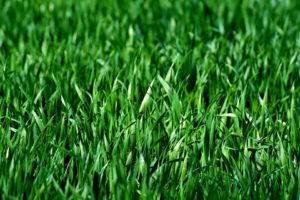
Whether planting a new lawn or just trying to fix a few dry patches, you may want to consider grass seed.
Whether planting a new lawn or just trying to fix a few dry patches, you may want to consider grass seed. It’s a fantastic way to improve your lawn’s quality and growth. Everyone at every level of landscaping can take advantage of grass seed as well, from the freshest of gardeners to the most seasoned lawn care specialists.
We’ve established that grass seed is useful, but that’s not the end of the story. Familiarize yourself with how grass seed can help grow the robust, beautiful lawn of your dreams.
What Even is Grass Seed?
There are many varieties of grass out there. It’s estimated that thousands of them have different characteristics and growth conditions. We get grass seed from the stems of grass that isn’t mowed and grows tall enough. The seed heads (also known as inflorescences) stick out to allow for pollination. Eventually, they recede into dormancy, harden, mature, and can be collected and used to grow new grass.
Why Would You Need It?
Grass seed is a suitable alternative to laying down turf, especially if you’re filling in dead spots or even if you’re growing a new lawn from scratch. Adding grass seed to an existing lawn to fill in brown or dead spots is a process known as “overseeding.”
So How Does Overseeding Work Then?
First, you apply grass seed to the soil. After that, it must go through germination, a process where the seeds get to retain enough water such that they begin to sprout grass blades. This process can be tricky and is impacted by a few different factors, including:
- The soil temperature. For spring grasses to thrive, for example, the soil should be around 55°F.
- The seed’s shell thickness. The seed’s outer shell has a big effect on germination and when the seed is ready to begin the germination process.
- The moisture levels. You want to hit the perfect amount of moisture because too much or too little will hurt the seed and prevent growing.
- The overall oxygen content. If your soil has too much moisture in it, it also prevents oxygen from reaching the grass seed and will stop growing.
- The amount of light. If your seed is buried too far into the soil, it can’t catch the sun’s rays and won’t grow. Sunlight is critical for photosynthesis.
When Should You Seed?
Typically, you want to plant grass seed in moderate weather, roughly between August and September. Those moderate temperatures can help encourage germination and root growth. It also means that your grass seed is going to have less competition, as weeds won’t be vying for the same nutrients.
Have More Questions? Stay in Touch!
Order early and order often to ensure the best service possible. Contact us through our online page. Please find us at 27616 Little Lane, Salisbury, Maryland 21801. Our phone number is 410-726-6103, and our fax number is 410-742-6550. Speak to Jason Anderson for Turf Grass Sales. Reach him by email at jason@quanticocreeksod.com. Finally, follow us on social media on Facebook, LinkedIn, and our blog!
